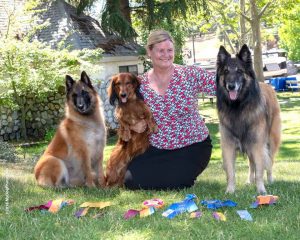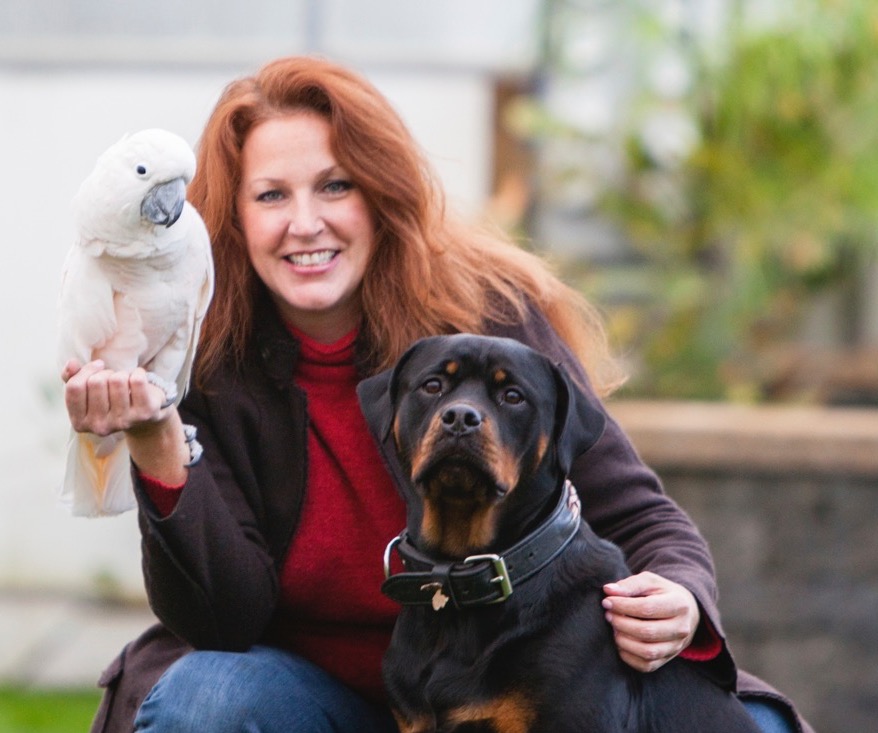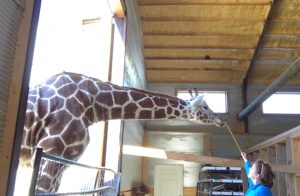219 – Positive Solutions for Canine Aggression Issues
Tips and tools for managing canine aggression using positive reinforcement
Lisa Moore is a canine behavior counselor who works regularly for clients dealing with aggression issues in their dogs. She uses positive reinforcement and counter-conditioning methods to bring these dogs to a point at which they can be safely managed.
“One of my Belgian Tervuren had aggression issues,” Moore said. “The old techniques I had used were not going to be effective without somebody getting hurt. This was my primary motivation for making the switch to positive reinforcement and clicker training.”
A successful obedience competitor prior to her introduction to clicker training, Moore noted that, dog training is an unregulated profession. “Anybody can hang up a shingle and call themselves a dog trainer,” she said.
Moore strongly recommends working with a trainer certified by the Karen Pryor Academy and/or the Association of Professional Dog Trainers.
Common aggression issues
Moore shared advice on three very common types of aggression, how to identify the behavior and how to condition dogs correctly to be able to manage them:
- Fear aggression
- Leash reactivity
- Resource guarding
“Management will always play some sort of role when you have a reactive dog,” Moore noted.
Some general principles to keep in mind, according to Moore, when dealing with aggression issues.
- There is no room for corrections. Punishing any type of aggressive behavior will make it worse.
- There are no quick fixes. Corrections will suppress the behavior, but that is not a fix.
- Dogs will always have “tells” that will give you an early warning that trouble is brewing.
- Understand and listen to your dog.
Fear aggression, Moore said, is the easiest to fix. “You get the fear to go away, the aggression goes with it,” she added.
Leash reactivity is a situation in which Moore said, more often than not, she has to train the owner not the dog. “The owner tenses up, the dog reads that behavior and says ‘Mom’s worried, something must be wrong,’” she observed.
Resource guarding is a very common, solvable behavior, Moore said. Much more so when it is caught early, before it becomes entrenched. She added that dogs who become habituated to resource guarding can be particularly dangerous.
Learn more about applied behavior analysis in last week’s episode with Lara Joseph.
Allison Foley’s Tip of the Week from the Leading Edge Dog Show Academy regards mentorship and how to find it, and give it!
217 – Crate Training, Jumping Up, Digging and Behavior Analysis
Behavior analysis and positive reinforcement create success
Animal behaviorist Lara Joseph shares her expert knowledge on understanding our dog’s behavior, how to read signals from the dog and use behavior analysis to shape a new future.
Joseph knows for a fact that positive reinforcement training works. She uses it extensively with zoo animals and exotics, as well as companion dogs.
“You can’t use force or aversives on exotics,” Joseph said. “You know you can make your dog sit by pushing its butt down… try doing that with a giraffe!”
Joseph discusses redirecting behaviors by correctly identifying the reinforcers. In other words, what, exactly, does the dog want and how is the behavior he is exhibiting fulfilling that desire.
The “Terrible twos” are a tremendous opportunity to train a dog, Joseph said. The dog is at an age where it is constantly manipulating its environment to get the consequences it desires.
“The animal is learning contingencies and consequences in its environment,” Joseph noted. “If the animal can see, hear, smell or feel you, you are training it, whether you realize it or not. The key question is, what are you training it to do.”
Shaping Behaviors
Crate training, digging and jumping up are all “behaviors” that can be shaped, Joseph said. Redirecting the dog’s behavior requires correctly identifying the “reinforcer” – in other words what the dog wants – and then providing that reinforcer for an acceptable behavior.
She cautions against moving too quickly through a training plan. Start small and reinforce big.
“If you take too big of steps in your shaping plan,” Joseph said, “it can turn what you’re trying to train in to an aversive, something the dog doesn’t like.”
Joseph said that what dogs understand is contingencies – “if I do this, this happens…. If I do THIS, this doesn’t happen…”
Another important option is called a “Conditioned Reinforcer.” In other words, every time the dog goes in the crate, it gets a treat that it is available no other time.
Listen to your dog
Joseph also addressed the topic of aggression in dogs.
“Aggression serves a purpose for the dog,” Joseph observed. “It gets them what they want. If the growl didn’t work, he’ll try a lunge. If you pull your hand back, and the dog wanted you to retreat, it’s now learned what works.”
Hear what the dog is trying to tell you, Joseph said. Reinforce the good behavior. Pay attention to the dog. All dogs really want is attention. Be consistent. Create duration.
Check out our newest advertiser, Trupanion!
Don’t miss Allison Foley’s Tip of the Week from the Leading Edge Dog Show Academy: Overweight dogs and green beans!
Biography:
Lara Joseph is the owner of The Animal Behavior Center, an international, educational center focusing on teaching people how to work with animals using positive reinforcement and approaches in Applied Behavior Analysis. She is a professional animal behavior consultant and trainer. Lara travels internationally giving workshops, lectures, and provides online, live-streaming memberships on animal behavior, training and enrichment. Lara’s focus is on the companion animal community, zoos, shelters and wildlife ambassadors. Her daily work focuses on teaching people through her live-streaming services on animal training, behavior modification, and enrichment to people all over the world via her Projects and Memberships. She sits on the advisory board for All Species Consulting, The Indonesian Parrot Project, and is director of animal training for Nature’s Nursery, a wildlife rehabilitation center in Whitehouse, Ohio. She is also the founder of several animal organizations for animal welfare. She has been asked to co-author and is currently working on international manuals of animal behavior and training. Lara is a professional member of The Animal Behavior Management Alliance, The International Association of Avian Trainers and Educators, and The Pet Professional Guild. She is a published author and writes regularly for several periodicals including The Pet Professional Guild’ BARKS for professional dog trainers, a behavior columnist for BirdTalk Magazine, and contributes to blogging for Deaf Dogs Rock. She is a guest lecturer in the Zoo Biology; Animal Nutrition, Behavior & Diagnostics taught by Dr. Jason Crean at St. Xavier University; Chicago. Lara has presented for a wide variety of organizations such as The Philadelphia Zoo, The Ohio State Exotic Veterinary Club, The Association of Avian Veterinarians, Best Friends Animal Society, The Pet Professional Guild, The International Wildlife Rehabilitator’s Conference, The Autism Model School, and The Wheaton College division of Applied Behavior Analysis, and at Best Friends Animal Sanctuary for the Pet Professional’s Guild’s Workshop. For more information visit her website at TheAnimalBehaviorCenter.com. Also her Facebook page where she live streams a weekly episode on ABA and its use with animals called Coffee With The Critters: https://www.facebook.com/TheAnimalBehaviorCenterLlc/ Find her on Instagram: https://www.instagram.com/theanimalbehaviorcenter/




